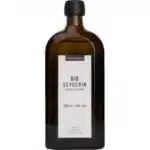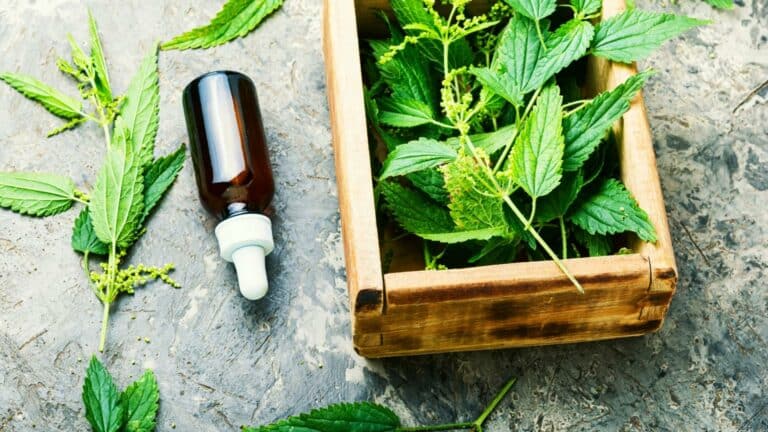Glycerin is better than alcohol
Glycerin, like alcohol, is both fat and water soluble. This makes it ideal for making your own tinctures to release a wide range of valuable ingredients from plants.
Additional advantages
- pleasant, sweet taste
- suitable for pregnant women and children
- long durability
- slight antimicrobial effect
- preservative
Alcohol is often used to make your own tinctures:
- Alcohol in tinctures is usually derived from corn and is therefore GMO contaminated, even if it is organic.
- These tinctures therefore feed all the pathogens that are behind chronic complaints.
- Even if the alcohol is not derived from corn (e.g. grape alcohol), the alcohol penetrates the herb and destroys its benefits.
- In addition, alcohol always damages the liver and weakens the immune system (cf. Cleanse to Heal (p.478)).
Making your own tinctures is not difficult
All you need is:
- Herbs (fresh or dried)
- Vegetables Organic glycerin
- a screw-top jar
- a filter (Nut milk bag, coffee filters etc.)
- optional: Brown glass dropper bottles
Step by step to your own tincture
- Harvest the herb intended for the tincture (alternatively, you can use purchased organic herbs). The herbs can be used both fresh and dried.
- Process the herb as quickly as possible. The more time that passes after harvest, the less beneficial the herb is. Wide-necked jars (e.g. 1 liter preserving jars) that can also be closed well are best. Chop up the herb beforehand so that as much as possible fits into the jar.
- Now you pour over your herb Glycerin and purified water until the glass is full to the brim. You can use the ratio of 60 % glycerin to 40 % water as a guide.
- Label your jar with the herb name + date.
- Shake the tincture well at least once a day. This gets the glycerin moving and allows it to be better absorbed by the herb.
- Depending on the herb, your tincture will be ready in 2 weeks to 2 months.
- Now you have to strain out the coarse ingredients. For example, you can use a coffee filter or a nut milk bag.
- The remaining liquid is your finished tincture. If necessary, you can fill them into small dark glass bottles and then take them later with a pipette.
- You should also label the small bottles carefully (name of the herb + date of manufacture). This way you can better estimate the durability later.
Warning! Be careful, it feels like 99 % of the glycerin products on the market consist of no-foods and are therefore of course not suitable for compliant tinctures! It looks different Kasimir + Lieselotte out, there is conformal glycerin to buy in organic quality, which is ideal for producing your own, compliant tinctures:

